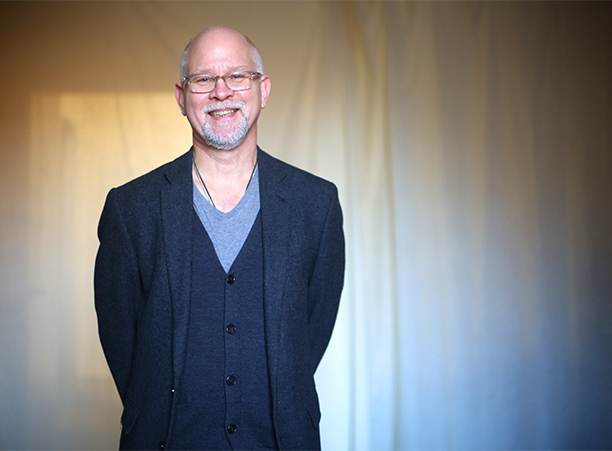
A cognitive psychologist, Professor Richard Schmidt’s research has long focused on the motor movements of socially interacting individuals.
“Interpersonal relations rely not only on spoken, linguistic communication, but also on the shared physical language of the body,” he says. “For example, a listener’s shifts in posture are coordinated with a speaker’s speech rhythms. It’s a like a dance—a back and forth, a give and take.”
For individuals with autism, he says, that dance is off-beat.
Until now, most research into the social disconnectedness of people with autism has focused on the relation with language or mental impairments. However, Schmidt’s research—funded by a grant from the National Institutes of Health(NIH)—indicates a close relationship between bodily coordination and the severity of autism. “Our research investigates the impairments in social interaction by evaluating social competence in terms of the bodily ‘dance’ that occurs in social interactions, rather than in terms of mental abilities,” an entirely new perspective on the disorder.
The promise of Schmidt’s work on autism—which has been performed in partnership with researchers from Assumption College and the University of Cincinnati—is twofold: to identify the lack of synchronicity in body language of pre-verbal infants with their mothers, in the hopes of leading to an earlier diagnosis; and to establish a common body language with patients with autism, which could lead to better approaches in therapy. “Because the measurement of interpersonal bodily coordination is an objective behavioral measurement, it can potentially be used to evaluate the social competence in the very young at the crucial early stages of autism,” says Schmidt. “We can also use bodily coordination interventions – such as ‘social’ movement therapy—to potentially divert the path of the disorder at other critical stages.”
Schmidt, whose research also focuses on the disintegration of interpersonal communication in individuals with schizophrenia, became interested in autism as a result of overseeing an honors thesis conducted by one of his Holy Cross students, who is now a doctoral student continuing her own work in autism.
That collaboration is not atypical. “My students play a key role in my research, not only in the day-to-day data collection and analysis but also in the generation of new methodologies and research questions,” Schmidt says. “Collaborating with them is rewarding, and their projects and ideas are often inspiring to even the most experienced professors.”
In addition to his one-on-one advising and research projects with students, Schmidt takes joy in teaching—from introductory-level courses to seminars including this semester’s “Connected Bodies, Coupled Minds,” which looks at the role of the body in our sociality, and the neuroscience and dynamics of the coordination of mind and body in social interactions.
A member of the Holy Cross faculty since 1995, Schmidt is widely published and he is a frequent organizer of and participant in national and international conferences and symposia. He has been principal or co-investigator on major multi-year research projects, supported by grants from NIH and the National Science Foundation.
With the success of the initial NIH-funded research, Schmidt plans to continue his work in the autism field, with additional grant proposals pending which would support investigations using brain imaging in individuals with autism. “This view of the neurological pathways will allow us to investigate and understand the neurocognitive mechanisms underlying the social disconnection of individuals with autism,” explains Schmidt. “We also plan to investigate whether practice in social bodily coordination enhances social competence and everyday social functioning.”
Related News
At the Frontiers of Autism Research, Prof. Schmidt’s Work Offers Exciting New Perspectives
Read Time
3 Minutes